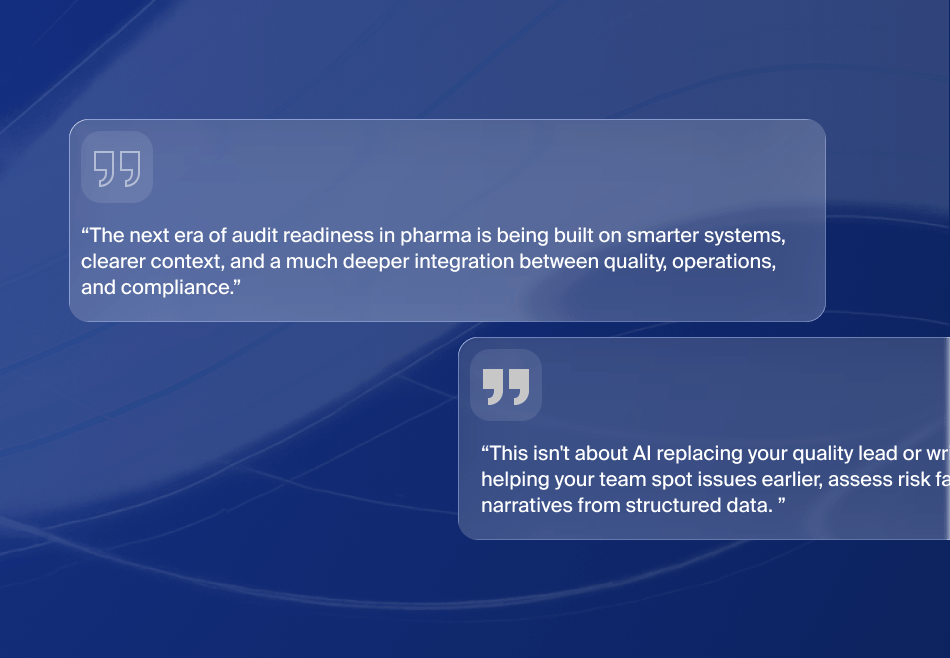ERP software provides a cradle to the grave system of tracing an entire supply chain.
Digitizing the pharmaceutical industry supply chain pays benefits to the companies, executives and employees. How? By allowing companies to be more efficient, resilient and responsive to rapidly changing customer requests and regulatory demands. This digitization allows for:
- Near real-time tracking of raw materials.
- Accurate raw materials inventory tracking.
- Updated details quality control.
- Batch tracking from production to final delivery.
Companies benefit from greater efficiency and better resource allocation. Better resource allocations means employees can be performing more meaningful work.
Key Advantages
Accountability is one of the key advantages of using enterprise resource planning (ERP) software. When a company inputs data for supply chain topics such as inventories of raw materials, quality control test results, warehouse storage temperatures and government recall notices, it has the company’s core data at its fingertips. Chief financial officers (CFOs) and chief technical officers (CTOs) can track any product from its raw materials source through development, testing, production and distribution.
When a company implements a fully digital solution, it has the ability to track any single item anywhere under company control. This permits more efficient use of raw materials—they go where they are needed now—and accurate planning for the future.
Raw Materials Purchase Order Workflows
Digitization dramatically speeds the ordering and delivery of purchase orders. With the click of a mouse, a company in the U.S. can send a PO to a supplier in India. The supplier can review the request and compare the materials and quantities requested to what is on hand. If the supplier lacks any of the requested items, it can either order it from a different firm or notify the requesting pharmaceutical plant. Either way, the production facility quickly knows what is coming and when.
Enterprise resource software such as Microsoft Dynamics 365 for Finance gathers information from multiple sources. It combines individual data points—a customer’s request for a new shipment, a salesperson’s request to have the order fulfilled, a stock check to determine if sufficient raw materials are on hand, an order to one or more suppliers for the active pharmaceutical ingredients (APIs)—in one place.
The end result is that instead of making numerous phone calls trying to locate everything, a chief financial officer can ask the question, “Can we fill this customer’s order now? If not, when?”.
Figure: 1Raw material purchase order process
Digitizing Quality Control Testing
Tracking products is important. So is tracking product quality. When the quality control testing process is digitized, CFOs:
- Have access to standardized recording and reporting processes
- Can act proactively instead of reactively
- Have open lines of communication with different departments
- See when a process is working and can discontinues those that are not
Digitizing these processes lets companies recognize and resolve quality control issues early in the process. They save money by not producing large quantities of inferior products.
It allows firms to recognize problems on the factory floor, saving the time and expense of shipping defective or poor quality materials—such as medicine stored at the wrong temperature—only to then pay for shipping it back.
Through digitization, quality control inspectors increase the speed of their inspections when they upload information into a centralized database.
Digitization also makes it easier for companies to comply with regulatory requirements. Required records and standards are a few keystrokes or mouse clicks away.
Data collected anywhere from cell phones, tablets and hand-held scanners allows workers to input inventory information. This can include creation dates, batch numbers, temperatures and anything required by company standards or to meet regulatory requirements.
Having digital records makes it easy for company quality assurance teams to create certificates of analysis (COAs). “A COA typically contains the actual results obtained from testing performed as part of quality control of an individual batch,” a report by InSource Solutions states.
When connected to an ERP system such as Microsoft Dynamics 365 Supply Chain Management, companies can:
- Create quality orders based on trigger points
- Document test results and then determine if they meet established criteria
- Maintain nonconforming products to track down the original cause
- Schedule error correction processes
- Print a COA showing the test results
Figure: 2Quality control analysis from System Dynamics Supply Chain
Batch and Lot Tracking
ERP programs such as Microsoft System Dynamics 365 Supply Chain Management allows companies to create and track specific production quantities.
For example, if an individual batch is created, the ERP program creates a label with a barcode or QR code on it. The label allows scanners to immediately access information such as the creation location, date and other relevant data. After the production batch is created, individual lot numbers are assigned. Serial numbers are then assigned to individual items.
Workers scan each batch and add its warehouse and location details, such as section, row and bin number. When batches are broken into lots, each scan updates the tracking information providing a clear path from the current location to its creation.
Using these codes, warehouse workers can locate any given batch, lot or individual item from the time of creation through storage and transportation until final delivery.
Lot Traceability
The ability to trace production lots is important not just to ensure that every item goes to the correct destination but to ensure when problems occur, they can be addressed quickly.
For example, a batch of Covid-19 vaccines is given an expiration date. New data arrives indicating that the original expiration is incorrect, prompting a safety recall.
Having digital barcodes on each lot and individual product allows pharmaceutical companies to track the batch and every lot from it. Requests to pull specific lot numbers are sent directly to affected customers only. Those receiving unaffected batches are not notified. Impacted customers can then be given instructions on what to do if they encounter a bad batch.
Digital Signatures
The days of requiring a person to manually sign a form acknowledging receipt of a delivery are long gone. The U.S. Electronic Signatures in Global and National Commerce Act (ESIGN) of 2000 ensures that electronic signatures are legal wherever federal laws apply. When federal law is not applicable, most U.S. states follow the Uniform Electronic Transactions Act (UEFA).
Now considered valid in terms of regulatory compliance are electronic signatures, such as using a stylus and tablet when making or receiving a delivery, and digital signatures. Digital signatures do not require a handwritten acknowledgement but are still considered legal, according to Adobe.
One of the benefits of using electronic signatures in the pharmaceutical industry more than paper versions is providing the proof of delivery. This authorization is readily available to authorized executives anywhere in the world within seconds. When questioned about a delivery, the electronic signatures provide proof of receipt.
Summary
Going digital saves companies time, money and unneeded expenses. Information can be organized more efficiently and is available on demand. ERP programs allow for accurate product tracking of raw materials and finished products, along with the added benefit of things like digital signatures and barcode scanning.
For more information on implementing digital processes in your pharmaceutical company, book a consultation with our team of experts.










